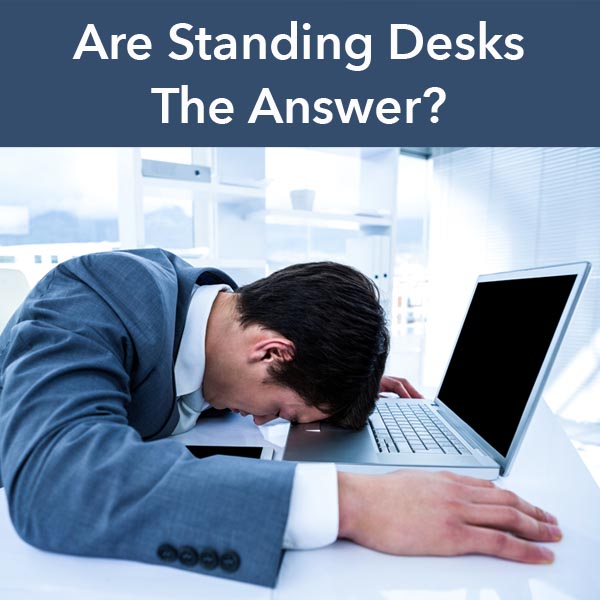No.
The end.
Alright, I’ll elaborate. The human body is a marvel of adaptation. It thrives when it is asked to adjust to a changing environment. It does not appreciate stasis.
Like the water in a pond with nowhere to go, when we are stuck in one position, we develop scum.
There is a common myth in the media these days, stating “Sitting is the new smoking.” And it’s a matter of fact that modern humans indeed rely too much on chairs to find a relaxed position. The result is a constellation of problems, biomechanics and physiological. The postural faults associated with chronic sitting are generally termed “lower crossed” and “upper crossed syndrome.” This leaves us with neurologically amnesiac glutes and abdominals paired with chronically shortened hip flexors and low back erectors in the lower extremity. And in the upper extremity the result is neurologically amnesiac scapular retractors and neck flexors and shortened (“tight”) pecs and upper traps.
 Physiologically, the lack of movement and static nature of sitting reduced blood flow and return adversely affecting circulation and contributing to the development of soft tissue adhesions. Think of these as the scum in your sitting pond, “gunking” up the normal elastic properties of muscles, tendons and joints.
Physiologically, the lack of movement and static nature of sitting reduced blood flow and return adversely affecting circulation and contributing to the development of soft tissue adhesions. Think of these as the scum in your sitting pond, “gunking” up the normal elastic properties of muscles, tendons and joints.
But it would be a mistake to assume that if we swap standing for sitting the deleterious results are automatically reversed.
When patients ask me for ergonomic advice in regards to a long, computer centric work day, I think they assume I’ll pick a position. The unfortunate truth is much more demanding on our modern work environment. Think about the ancestors whose genes we’ve inherited. Their days would have been filled with constantly varied functional movements…wait, I’ve heard that somewhere before.
Walking, squatting, reaching, lifting, stirring, skinning, swimming, throwing, relaxing, sprinting…
The one thing we can assume is that at no point in a hunter-gather’s life did they sit or stand for 8-12 hours at a time. The only thing humans are adapted to do for that length is sleep.
The thing about the sit vs. standing desk debate is the question itself assumes one is correct. It is not. The answer to how can we better survive modern work environments is quit complicated and often not conducive to, wait for it, modern work environments. It requires changing positions frequently, from sitting, standing with a relaxed support, and taking frequent breaks to walk and squat and bend and move. Basically, your boss’s worst nightmare.
On days that I plan to be in front of a computer for extended periods I have setup at home that allows me to sit, stand, lean and change positions frequently. Which I do. This is not some sort of crazy expensive setup either. It’s a desk, a dining table, a kitchen island with a box on top and a stool. Options.
I recommend not staying in the same position for more than 30 minutes without breaking up the pattern. At the very least engaging in a few quick mobility and stability sequences can help offset the static nature of modern work.
(A quick preview of the Full Body Fix Desk Worker’s Syndrome Protocol)
I’ve collated a series of exercises that can be done safely at work with minimal coworker interference in my Full Body Fix video program. I’d encourage you to check it out as a great starting place to reclaim your ability to adapt.
In the meantime – do your best to keep shifting toward more variety in your daily routines.
Yours in Health & Strength,
Dr. Scott

Stop chasing pain and wasting your time! Snag my complete Video Rehab Program The Full Body Fix and take $10 off with a subscriber only coupon and grab my Free Warm Up Manual while you’re at it! I even have a full “DESK WORKER SYNDROME” protocol!
Last modified: April 8, 2018




 I'm Dr. Scott A. Mills and I'm a chiropractor in San Francisco who creates resources for athletes and everyday people to eliminate pain and improve the way you move.
I'm Dr. Scott A. Mills and I'm a chiropractor in San Francisco who creates resources for athletes and everyday people to eliminate pain and improve the way you move.